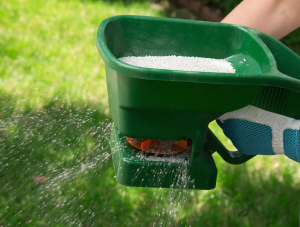The Best Advice for Fertilizing
The yard surrounding your home is like the icing on a cake. It adds the finishing touch and flourishes that help define its personality. A fresh, green lawn frames the house and people notice the details such as the flower beds, trim on the home and shutters. An unhealthy or unkempt yard detracts from the home’s appearance and can affect its resale value. Fertilizing the lawn can help keep it looking healthy and lush.
However, caring for your lawn is more than spreading fertilizer and hoping it works. One of the first things a lawn care professional will do if your grass is sparse, has bald spots or looks fragile is test the soil. This is like an annual checkup for your lawn. The results determine the type of fertilizer that can help the most, how much to use and how often to apply.
When it comes to lavishing attention on the yard, sometimes less is more. Many homeowners fertilize and mow frequently, hoping the ailing grass will spring back to life. Unfortunately, this seldom works. Mowing too often compacts the soil, reducing the oxygen needed for strong roots. Spreading fertilizer too thick or too often actually weakens the grass and makes it susceptible to disease. It can also create more thatch, which chokes the lawn, giving it a sparse appearance. Using the right mixture of attention and products at the right time of year is key to a gorgeous lawn.
Timing and products are important for a healthy yard. Fertilizing near water features, in the mid-summer heat and when the ground is still frozen are all detrimental to the appearance of the lawn and can inhibit growth. Organic products for grass and plants have fewer harsh chemicals than traditional options. Winter maintenance should differ from the summer schedule for mowing and trims. Lawn care professionals can help prepare and maintain your lawn year-round, making you the envy of the neighborhood.

